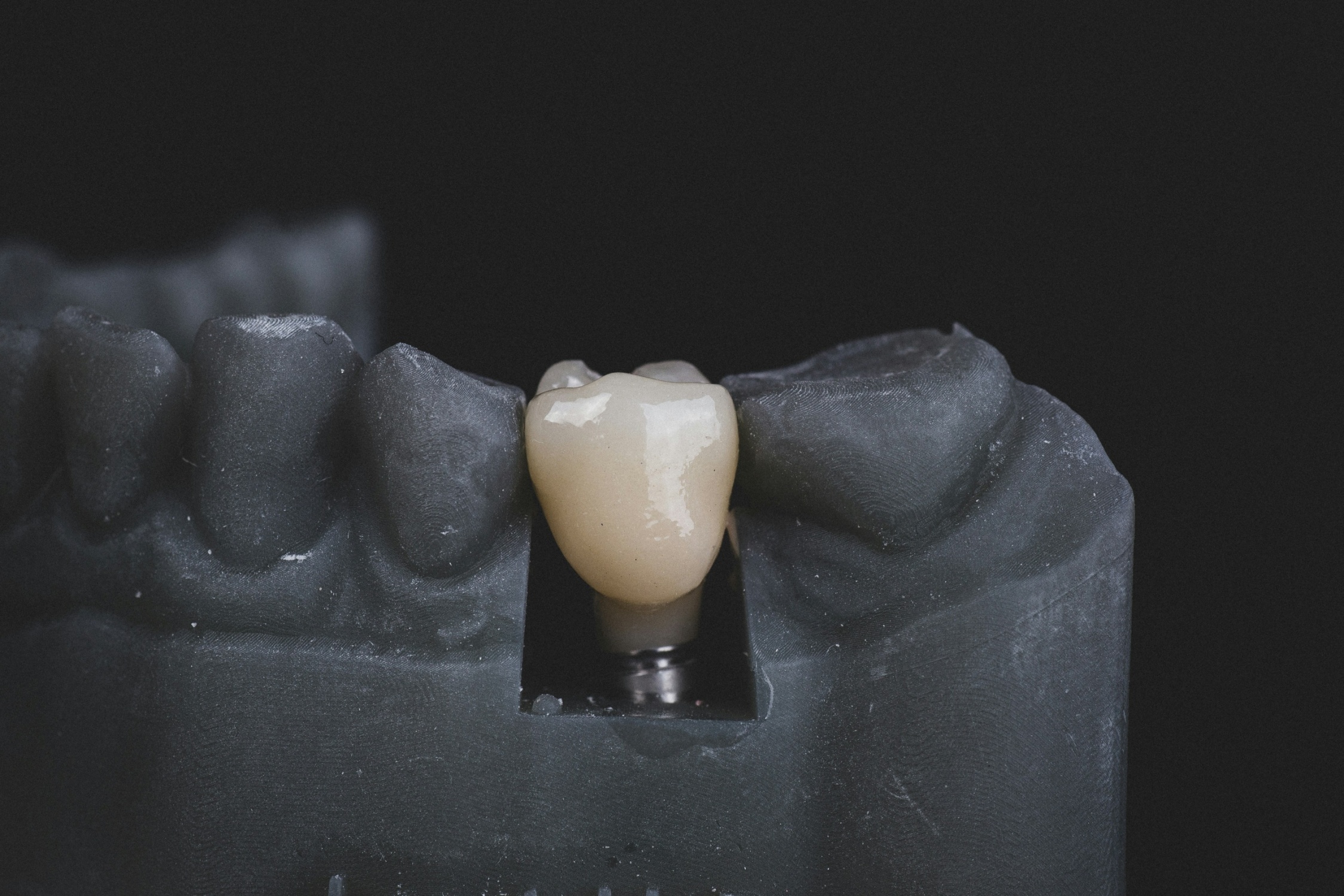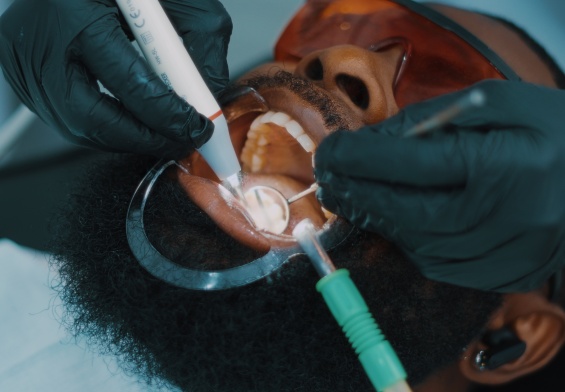Implant bridges are fixed dental restorations that replace multiple missing teeth using implants rather than natural teeth for support. Unlike traditional bridges that rely on reshaping neighboring teeth, implant-supported bridges are anchored directly into the jawbone. This approach not only restores the appearance and function of your smile but also helps preserve bone density and prevent future oral health complications. For patients seeking a long-lasting cosmetic and structural solution, implant bridges offer one of the most advanced options in restorative dentistry.
How Do Dental Bridges Work to Replace Missing Teeth?
Dental bridges restore missing teeth by anchoring artificial teeth (pontics) between supporting structures known as abutments. Traditional bridges rely on natural teeth on either side of the gap for support, which often requires shaving down healthy enamel. In contrast, implant bridges use surgically placed implants as anchors, avoiding any impact on neighboring teeth.
- Traditional bridges are bonded to crowned natural teeth
- Implant bridges are supported by titanium or zirconia posts inserted into the jawbone
- Both types restore chewing function and prevent adjacent teeth from shifting
This difference has long-term consequences. Implant bridges maintain the integrity of surrounding teeth and support the jawbone, making them especially valuable for patients focused on longevity, oral health, and aesthetic outcomes.
What Are Implant Bridges Made Of?
Implant bridges are constructed from three core components: the dental implants embedded in the bone, abutments that connect to those implants, and the prosthetic teeth (pontics) that complete the restoration. Each element plays a vital role in the bridge’s function and appearance.
- Implants: Biocompatible posts—typically titanium or zirconia—that act as artificial tooth roots
- Abutments: Custom-designed connectors that join implants to the prosthetic bridge
- Pontics: Artificial teeth crafted from materials like zirconia, porcelain, or a metal-ceramic hybrid
Zirconia frameworks, such as those produced by NobelProcera®, have shown long-term success with minimal bone loss and excellent tissue compatibility. CAD/CAM technology is often used to digitally design the entire system, allowing for precision fit, esthetic symmetry, and high-performance strength. These modern materials and processes help ensure the restoration looks natural and functions comfortably in both the front and back of the mouth.
What Types of Implant Bridges Are Available?
The types of implant bridges available vary based on the number of missing teeth, implant placement strategy, and the desired aesthetic and maintenance profile. The most common types include fixed and screw-retained bridges, each suited to different clinical goals.
- Fixed implant bridges: Permanently cemented or screwed in place; not removable by the patient
- Screw-retained bridges: Attached via tiny screws; can be removed by a dentist for cleaning or repair
- Zirconia bridges: Crafted from durable ceramic for optimal esthetics and minimal wear
- CAD/CAM bridges: Digitally planned and fabricated for highly accurate fit and bite alignment
Zirconia bridges, in particular, offer excellent translucency and stain resistance, making them an ideal choice for cosmetic zones. Screw-retained designs are preferred in cases where access for hygiene or maintenance is important. Choosing the right type involves evaluating bone density, implant location, soft tissue health, and patient preference for long-term convenience.
What Happens During the Implant Bridge Procedure?
The implant bridge procedure involves multiple stages, each carefully tailored to ensure optimal outcomes in comfort, stability, and appearance. The process begins with a comprehensive evaluation and imaging, followed by implant placement, healing, and final prosthetic attachment.
- Initial diagnostic imaging (CBCT scans, intraoral scans) for 3D treatment planning
- Surgical placement of implants into the jawbone under local anesthesia
- Osseointegration phase lasting 3–6 months to allow the implants to fuse with the bone
- Final abutment and bridge placement after successful healing
In some cases, immediate provisionalization, placing a temporary bridge on the same day as surgery when bone stability permits, is possible. Patients are typically prescribed antibiotics, instructed on oral hygiene practices, and monitored during follow-up visits to assess healing. The result is a permanent restoration with high functional stability and natural appearance.
How Long Do Implant Bridges Last?
Implant bridges are recognized for their longevity, especially when placed under proper conditions and maintained with good oral hygiene. Clinical studies consistently report high survival rates over long observation periods.
- A 12-year retrospective study of NobelProcera® zirconia bridges reported a 98.2% prosthetic survival rate, with no framework fractures and minimal marginal bone loss
- A 25-year follow-up study found 95% implant survival and 88% prosthetic survival among patients who adhered to supportive implant therapy
- Success is strongly linked to patient compliance with cleanings, home care, and regular evaluations
The structural integrity of implant-supported prostheses, particularly those built with CAD/CAM frameworks, outperforms many other restorations. When properly maintained, an implant bridge can last decades. That makes it a compelling option for patients seeking a one-time, high-value cosmetic solution.
How Do Implant Bridges Compare to Traditional Tooth-Supported Bridges?
Implant-supported bridges differ from traditional bridges in several key ways. Unlike traditional options, which require reshaping and crowning neighboring healthy teeth, implant bridges avoid this irreversible step. They also contribute to jawbone preservation through direct stimulation of the bone—something traditional bridges cannot offer.
- Implant bridges maintain natural tooth structure
- They preserve jawbone volume, supporting facial aesthetics and long-term oral health
- Traditional bridges may offer faster results but carry higher long-term maintenance risk
This makes implant-supported bridges a better cosmetic and structural solution for many patients, especially those prioritizing bone health, natural appearance, and future dental stability.
What Are Patient Satisfaction and Esthetic Outcomes Like?
Patients consistently report high satisfaction with implant bridges, especially when crafted with premium materials and modern design techniques. The use of zirconia and custom shading allows for lifelike restorations that blend naturally with adjacent teeth.
- Highly esthetic outcomes with digitally designed zirconia bridges
- Low rates of mucosal inflammation and soft tissue complications over time
- Improved self-confidence due to restored smile appearance and speech function
In both functional and cosmetic assessments, implant-supported bridges meet or exceed patient expectations when properly placed and maintained. For individuals seeking long-term confidence in their smile, they offer a strong combination of appearance and performance.
What Are the Risks and How Should Implant Bridges Be Maintained?
Although implant-supported bridges are successful in most cases, there are still risks to consider—particularly if oral hygiene is lacking or follow-up care is inconsistent. Fortunately, most complications are manageable or preventable with proper protocols.
- Risks:
- Peri-implantitis (inflammation or infection of the tissues around the implant)
- Loosening of screws or abutments
- Chipping or wear of ceramic materials
- Maintenance:
- Use a soft-bristled toothbrush and low-abrasive toothpaste
- Floss daily using super floss or interdental brushes
- Use a water flosser for added cleaning beneath the bridge
- Attend routine checkups and cleanings every 3–6 months
A 25-year clinical study showed that patients who complied with structured aftercare had significantly lower complication rates and healthier bone and tissue stability over time. With consistent care, implant bridges can remain trouble-free for decades.
Implant Bridges FAQs
How long do implant bridges last?
Implant bridges can last 10 to 25 years or more, with many patients maintaining them well beyond two decades. Their longevity depends on oral hygiene, material quality, and regular professional care.
Who is a good candidate for an implant bridge?
Ideal candidates have multiple adjacent missing teeth, healthy gums, and adequate jawbone density. A comprehensive evaluation will determine whether implants can be placed safely and predictably.
How many implants are needed to support an implant bridge?
Most 3-unit bridges require two implants, while longer spans may need three or more for proper support. Your dentist will assess bone structure and bite dynamics to determine the exact number.
Is the implant bridge procedure painful?
The procedure is performed under local anesthesia and is generally well tolerated. Mild discomfort may occur post-surgery, but this is typically managed with over-the-counter pain medications.
How do you clean around an implant-supported bridge?
You should brush twice daily, use floss threaders or interdental brushes to clean beneath the bridge, and attend routine dental visits. A water flosser can also help remove debris and plaque around the implant posts.
Should You Consider an Implant Bridge?
Implant-supported bridges offer a durable, esthetic, and long-term solution for patients with multiple missing teeth. They protect adjacent teeth, preserve jawbone health, and restore confident function and appearance. While the process requires planning, surgery, and consistent care, the reward is a stable, natural-looking smile that can last for decades.
If you’re considering cosmetic restoration and want a blend of performance, aesthetics, and longevity, implant bridges are a proven and transformative solution. Speak with your dentist or specialist to explore your options and see whether this advanced treatment fits your goals and lifestyle.
Resources:
https://my.clevelandclinic.org/health/treatments/10921-dental-bridges
Ahn J-H, Lim Y-J, Lee J, Baek Y-W, Kim M-J, Kwon H-B. A One-Year Randomized Controlled Clinical Trial of Three Types of Narrow-Diameter Implants for Fixed Partial Implant-Supported Prosthesis in the Mandibular Incisor Area. Bioengineering. 2024; 11(3):272. https://doi.org/10.3390/bioengineering11030272
Frisch E, Wild V, Ratka-Krüger P, Vach K, Sennhenn-Kirchner S. Long-term results of implants and implant-supported prostheses under systematic supportive implant therapy: A retrospective 25-year study. Clin Implant Dent Relat Res. 2020; 22: 689–696. https://doi.org/10.1111/cid.12944




